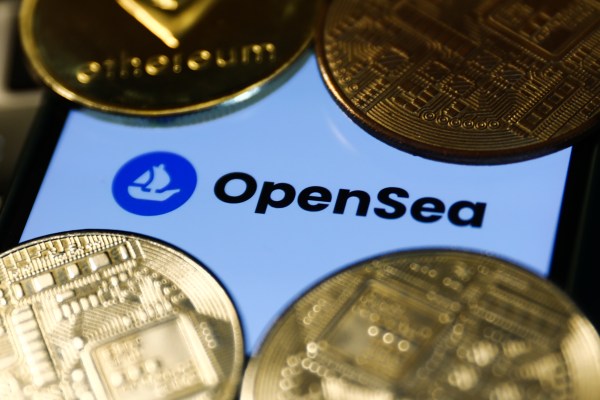It’s fair to say the NFT space has lost a lot of its sparkle over the past few years, but that hasn’t stopped some founders, investors and projects from trucking along in hopes of another surge. Devin Finzer, the CEO behind OpenSea, one of the first NFT marketplaces to gain serious traction and market share, is still betting big on the sector.
On January 1, 2022, NFT global sales volume peaked at $23.73 billion. Two years later, by the first day of 2024, they had fallen 94% to a mere $1.4 billion.
That kind of decline in sales volume obviously has had an impact on the revenue side of OpenSea’s business, but Finzer says it’s not something the company is “laser focused on.” Instead, it is working to improve its core products and user engagement, and bring in new incumbents — work “that sort of leads to higher volumes,” he told me recently on TechCrunch’s Chain Reaction podcast.
The NFT marketplace exploded back in 2021 when everyone and their grandmother was spending on NFTs of profile pictures and digital art, but Finzer thinks those were early use cases. “We still have so much further to go in terms of representing all of the wide array of things that NFT’s can represent,” he said. “Gaming is an example of a category that’s still really early.”
Founded in 2017, OpenSea quickly became one of the most well-known and well-funded NFT marketplaces in the world. It has raised over $400 million in total, and some of its backers include VC firms like Andreessen Horowitz and Paradigm, as well as celebrities such as Kevin Durant and Ashton Kutcher.
But no amount of money can buy lasting success, and Finzer is aware of that reality, noting that his company is trying to fine-tune its product and build for the long run.
“[Customers] come for the product experience initially, then stick around if the product continues to meet their needs and continues to improve alongside the evolution of the space,” he said.
Since its inception, OpenSea has seen sales of over $67.24 million with $36.46 billion in volume, according to DappRadar data. In the past 30 days, it ranked as the third-largest NFT marketplace, behind OKX NFT Marketplace and Blur, with about $100 million in volume.
Finzer admits that the companies and products he’s most loyal to are the ones he’s been using for a long time, and those have improved their user experience. “The long-term approach to user loyalty is really continuing to build a strong product offering.”
Going forward, Finzer is most excited about web3 gaming and “physical items represented as NFTs.” He thinks those two areas will be the most prominent use cases in the NFT space in 2024.
“If you look at existing marketplaces for rare physical sneakers, that’s actually quite vibrant; there’s a whole community of people that like to buy and sell those sorts of physical things,” he said. “So one of the really cool use cases for entities is, you take a physical pair of sneakers, you create an NFT, [and] you can buy and sell that NFT as many times as it can move around from person to person before it’s actually redeemed for the physical item.”
OpenSea has been working with some platforms to launch physical and digital collectibles, Finzer said. “There’s a lot more opportunity to explore and a lot more opportunity for growth there as well.”
Despite the NFT market’s drawbacks, OpenSea wants to stick to its initial mission — to foster open digital economies and “getting that holy grail” of a strong user experience, Finzer said. He views it as a “broad vision,” but pointed out that it encapsulates OpenSea’s goal of building the blocks for “all sorts of different economies” in the NFT space.
“It’s not just about art and profile pictures. It’s really about representing all sorts of different things on-chain . . . and then some things that we haven’t even imagined yet.”
Ultimately, the hope is to enable new use cases, innovation and new jobs in the future, Finzer added. “NFTs, we really think of them as this kind of generic building block for brand-new digital economies. I think we’re still kind of at the beginning of that trend.”
This story was inspired by an episode of TechCrunch’s podcast Chain Reaction. Subscribe to Chain Reaction on Apple Podcasts, Spotify or your favorite pod platform to hear more stories and tips from the entrepreneurs building today’s most innovative companies.
Connect with us:
- On X, formerly known as Twitter, here.
- Via email: chainreaction@techcrunch.com
